Did you know Border Terriers are ranked 104th in popularity among dog breeds by the American Kennel Club? As the proud parent of a new Border Terrier puppy, you likely chose this breed for their intelligence, boundless energy, and affectionate nature. Early training tailored to the Border Terrier temperament is essential for nurturing a joyful and obedient companion. By starting these techniques before 16 weeks of age, you can set your puppy up for success during this critical developmental window.
So, what makes Border Terriers such a trainable breed? This feisty pup is eager to please and thrives on positive reinforcement. When you reward desired behaviors, you strengthen your bond while instilling discipline. With patience and consistency, you can channel their energetic nature into a friendly trailblazer at your side for hikes or a tenacious canine athlete shredding the agility course.
This article outlines ten must-know training techniques to start your Border Terrier puppy on the path to becoming the best adventure buddy ever!
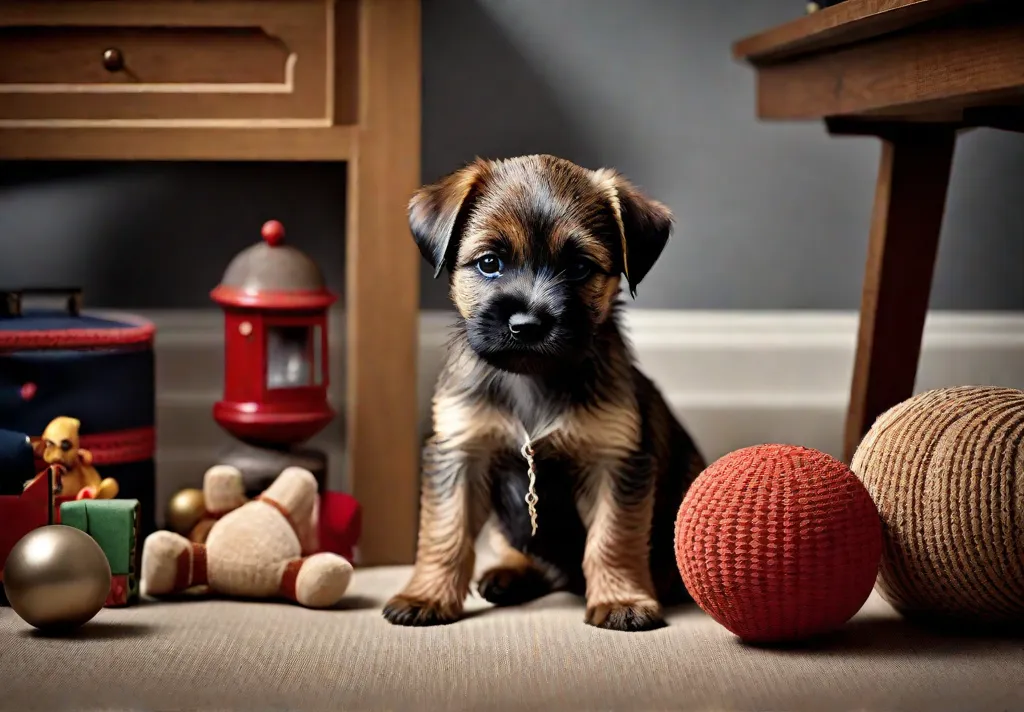
Table of Contents
- 1 Establishing a Predictable Routine
- 2 Socialization for a Friendly, Confident Pup
- 3 Mastering the Basic Cues
- 4 Loose Leash Walking
- 5 Crate Training for Comfort and Safety
- 6 Redirecting Nipping and Biting
- 7 Preventing Destructive Separation Anxiety
- 8 Clicker Training for Precision and Positivity
- 9 Housetraining Success
- 10 Mental Enrichment Through Agility and Games
- 11 Conclusion: Embark on Your Rewarding Journey!
- 12 Frequently Asked Questions
- 13 Related posts:
- 14 11 Border Terrier Puppy Grooming Hacks for a Perfect Coat
- 15 12 Fun Facts About Border Terrier Puppies and Their Quirks
- 16 12 Charming Border Terrier Puppy Behaviour that are the Cutest
- 17 Understanding Border Terrier Shedding: Causes and Solutions
Establishing a Predictable Routine
Consistency and clear communication are essential for Border Terrier puppies. Establishing a routine provides structure and helps your pup learn what to expect. This routine should include scheduled times for:
- Meals
- Potty breaks
- Walks
- Training sessions
- Playtime
The Role of Routine in House Training
Sticking to a consistent schedule will accelerate your puppy’s house training. Taking them outside regularly enables them to associate relieving themselves with particular times and locations. An elimination schedule helps regulate their bodily functions. Over time, this predictable pattern prevents accidents indoors.
How Routine Sets Clear Expectations
Beyond house training, a steady routine lays the groundwork for rules and boundaries. Your pup will grasp that mealtime means eating their kibble, not begging at the table. They’ll learn that walks focus on exercise, mental stimulation, and potty breaks – not constantly stopping to sniff. This understanding of what constitutes appropriate behavior provides your Border Terrier with stability.
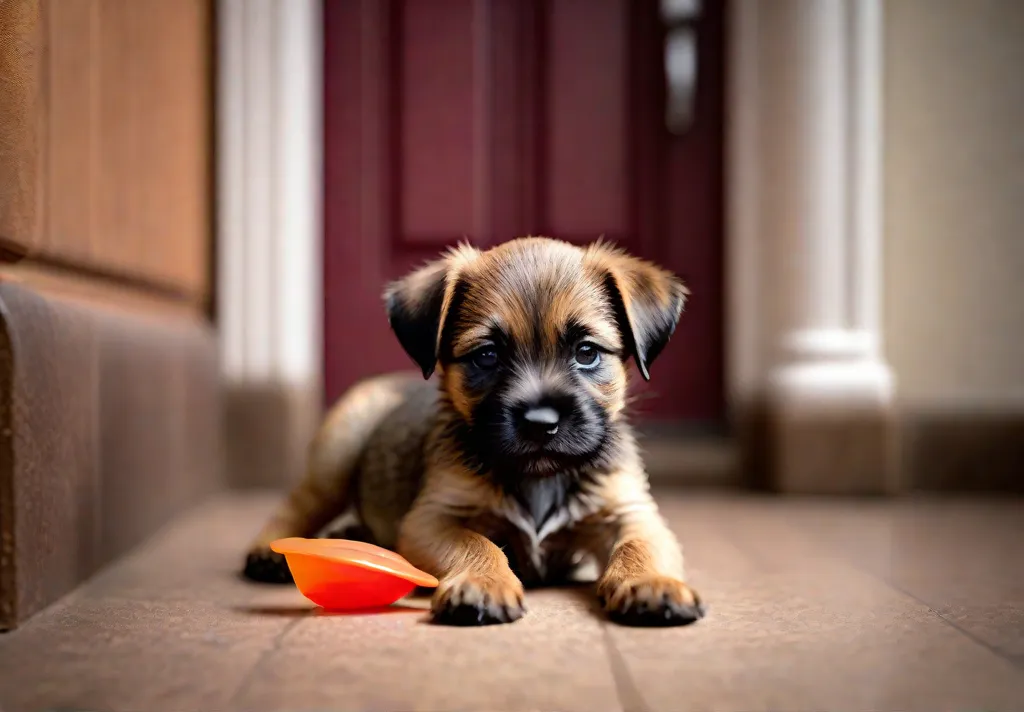
Socialization for a Friendly, Confident Pup
The critical socialization window for puppies is 3 to 16 weeks. Positive experiences during this impressionable period help Border Terriers develop into friendly, confident companions. You can prevent fearfulness and anxiety by gradually exposing your pup to new sights, sounds, smells, and people.
Tips for Safe, Effective Puppy Socialization
- Start with family and friends, then slowly introduce new people of all ages.
- Carefully monitor playtime with vaccinated, gentle dogs.
- Attend puppy kindergarten for structured socialization opportunities.
- Frequently bring your puppy to new environments like parks and stores.
Make socialization positive by rewarding good behavior and removing your pup if they seem scared or overwhelmed. The goal is controlled exposure to build their sociability, curiosity, and resilience.
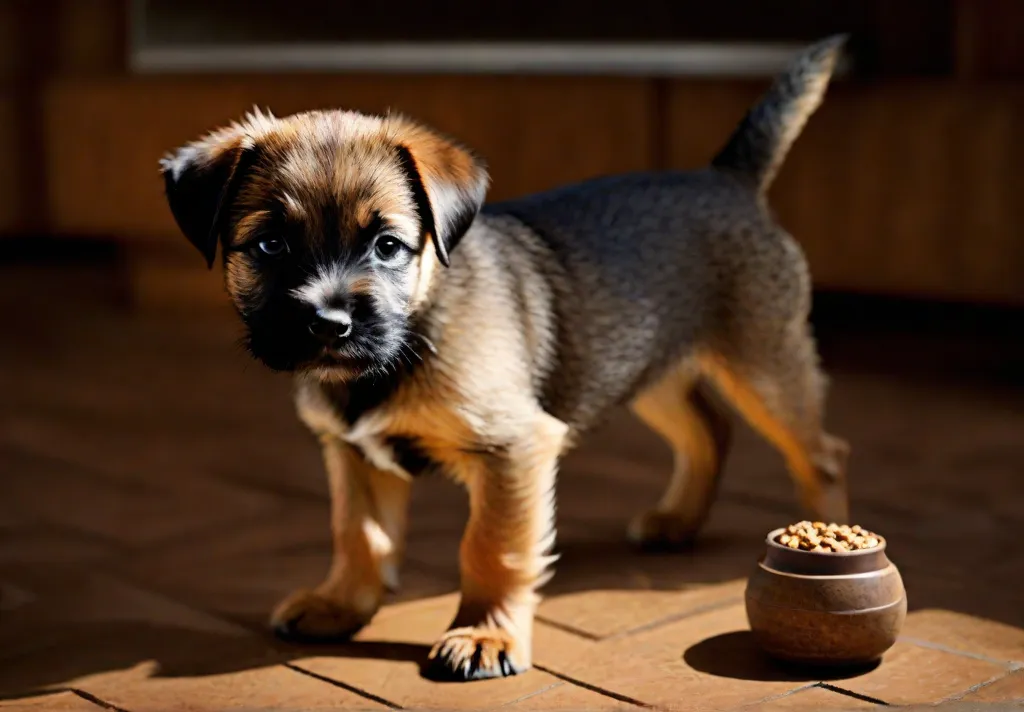
Mastering the Basic Cues
Once your Border Terrier puppy has acclimated to their new home, it’s time to start obedience training. The basic commands provide the framework for good manners and impulse control. Consistency, patience, and positive reinforcement are critical to success.
The foundation cues every Border Terrier should master include:
- Sit
- Stay
- Come
- Down
- Leave It
Use high-value treats to motivate your puppy during short, engaging sessions. Mark and reward approximations towards the desired response. With time, practice, and praise, your pup will soon respond reliably to these cues!
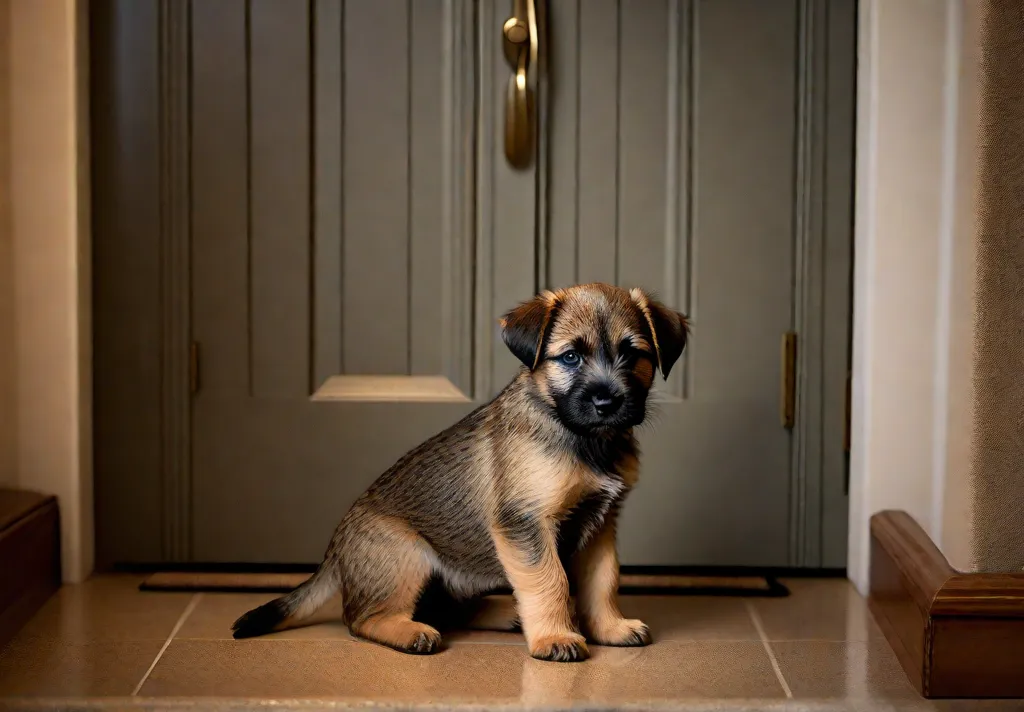
Loose Leash Walking
The curious Border Terrier will want to explore the great outdoors! Before your pup can safely do so, teach them to walk politely on a leash without pulling or zig-zagging.
- Gradually increase leash training duration and distance.
- Use treats to reinforce a relaxed leash posture.
- Implement the stop-and-go method if they start straining forward.
- Teach the “heel” command for focused leash-walking by your side.
With ample exercise, mental enrichment, and clear communication, your energetic trailblazer will be content strolling peacefully beside you.
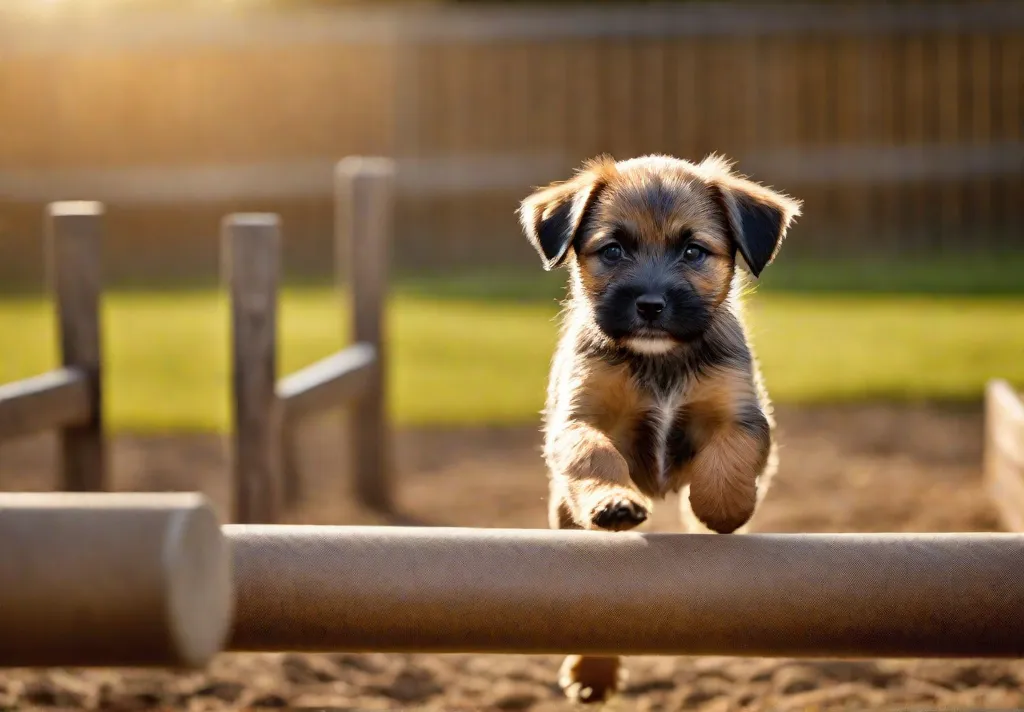
Crate Training for Comfort and Safety
The benefits of crate training are immense for Border Terrier puppies. The crate can reduce separation anxiety and prevent household destruction as a secure den. It also aids house training by capitalizing on your pup’s instinct to keep their space clean.
Follow these tips for making the crate a beloved retreat:
- Select an appropriately sized crate for comfort.
- Place a soft blanket and chew toy inside for coziness.
- Use treats and praise to reward entering the crate.
- Never use the crate for punishment!
Your Border Terrier will soon relish relaxing or napping in their home away from home.
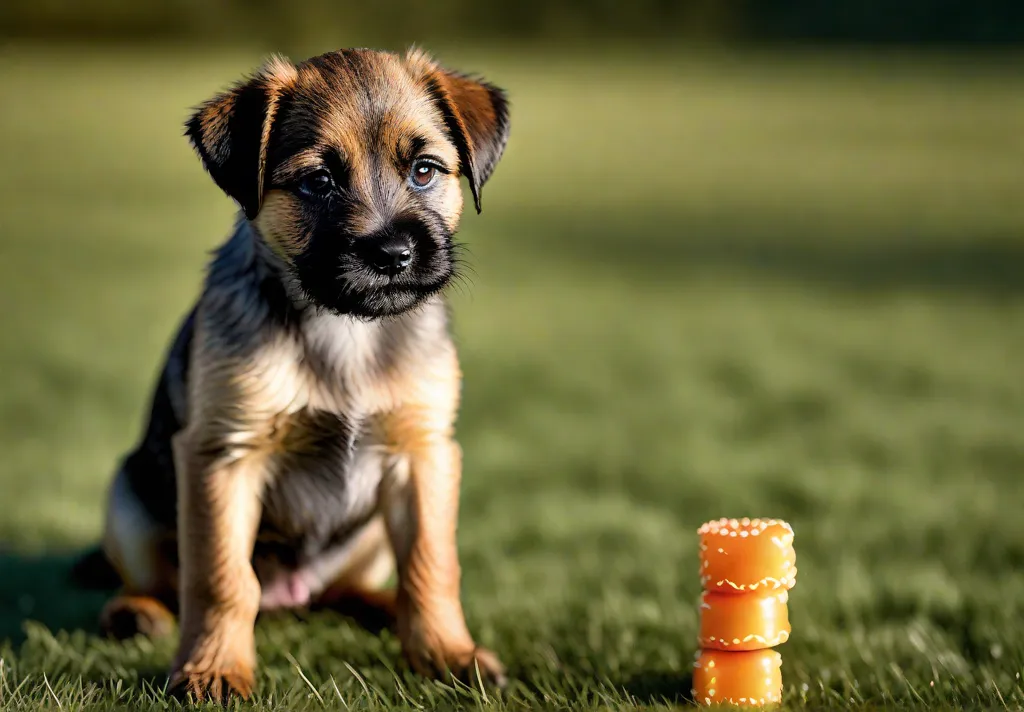
Redirecting Nipping and Biting
Those sharp baby teeth can do some damage during play! To curb biting and nipping, it’s essential to teach your Border Terrier bite inhibition. Sign up for puppy socialization classes so they can learn how hard it is to steal from their furry friends.
If those razors come out at home, have a rope toy ready to pop into their mouth. Say “Ouch!” dramatically and ignore them for 30 seconds if skin contact is made. Consistency with this positive redirection method will lead to a soft-mouthed companion!
Preventing Destructive Separation Anxiety
Border Terriers thrive on companionship and can become stressed when left alone. Separation anxiety can emerge if they don’t learn healthy coping strategies for independence. Use these proactive training techniques to avoid distress:

- Provide interactive puzzle toys for mental stimulation.
- Practice short solo intervals from early puppyhood.
- Avoid fanfare around arrivals and departures.
- Reward calm behavior when you return.
With patience and consistency, your Border Terrier will gain confidence in their ability to self-soothe when you step out.
Clicker Training for Precision and Positivity
This energetic and biddable breed responds readily to clicker training. The click sound marks exact moments of desired behavior, after which the pup receives a reward. This level of precision and positivity enables clear communication with your Border Terrier.
Here are the basics of implementing clicker training:
Let your pup explore the clicker to create a positive association through treats.
Click immediately when your pup demonstrates the behavior you want to reinforce.
Follow the click with verbal praise, pets, or a small food reward.
Repeat the sequence frequently in short sessions.
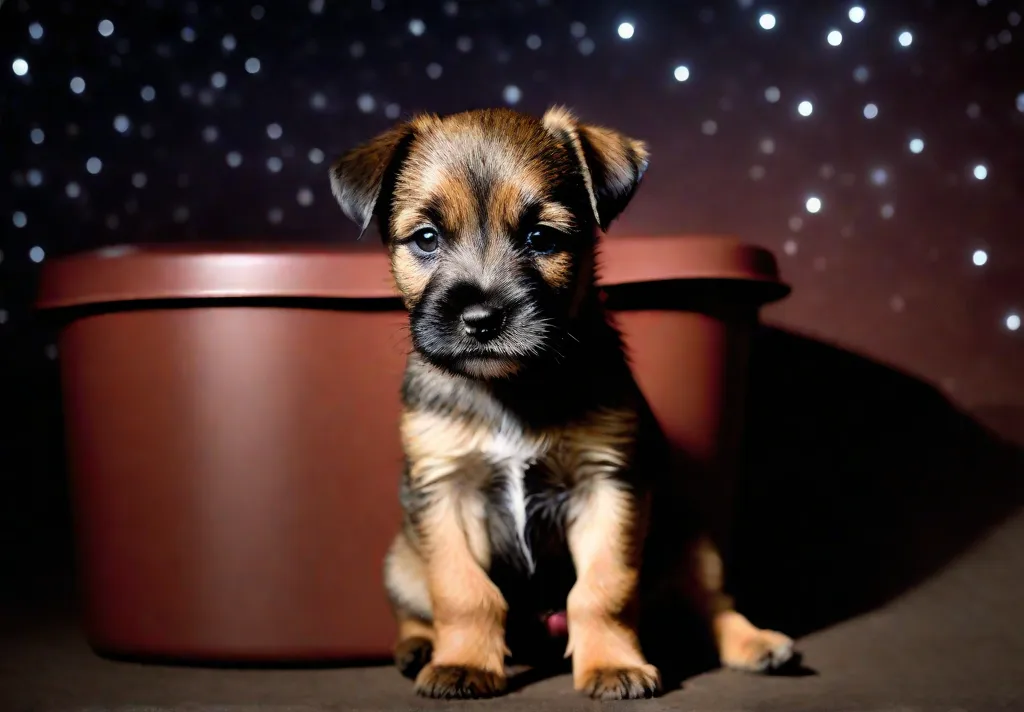
You can shape complex behaviors like agility jumps by clicking closer approximations until your pup understands the desired response.
Housetraining Success
Patience and consistency are crucial to potty training your energetic Border Terrier puppy. Set them up for success by:
- Escorting them to designated outdoor potty spots consistently
- Using a cue like “go potty” when it’s time for business
- Providing ample praise and treats when they go to appropriate areas
Signs of its go-time include circling, sniffing, and heading to quiet corners. Respond immediately to prevent indoor accidents. With time, your pup will communicate their needs reliably and keep your home fresh and clean!
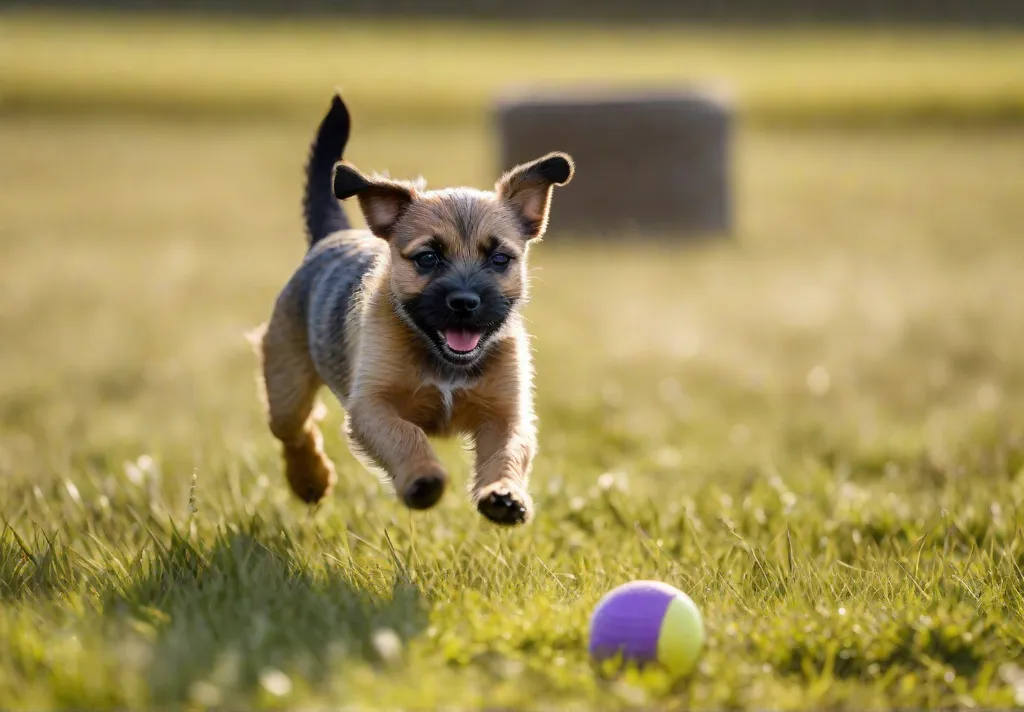
Mental Enrichment Through Agility and Games
The lively Border Terrier needs physical and mental exercise for a balanced, enriching lifestyle. Agility training and interactive games are fantastic ways to engage their bodies and brains.
Agility Equipment for the Win
- Weave poles
- Jumps
- Tunnels
- A-frames
Rally courses enable your pup to challenge their speed, coordination, and problem-solving abilities. They’ll sleep soundly after agility sessions!
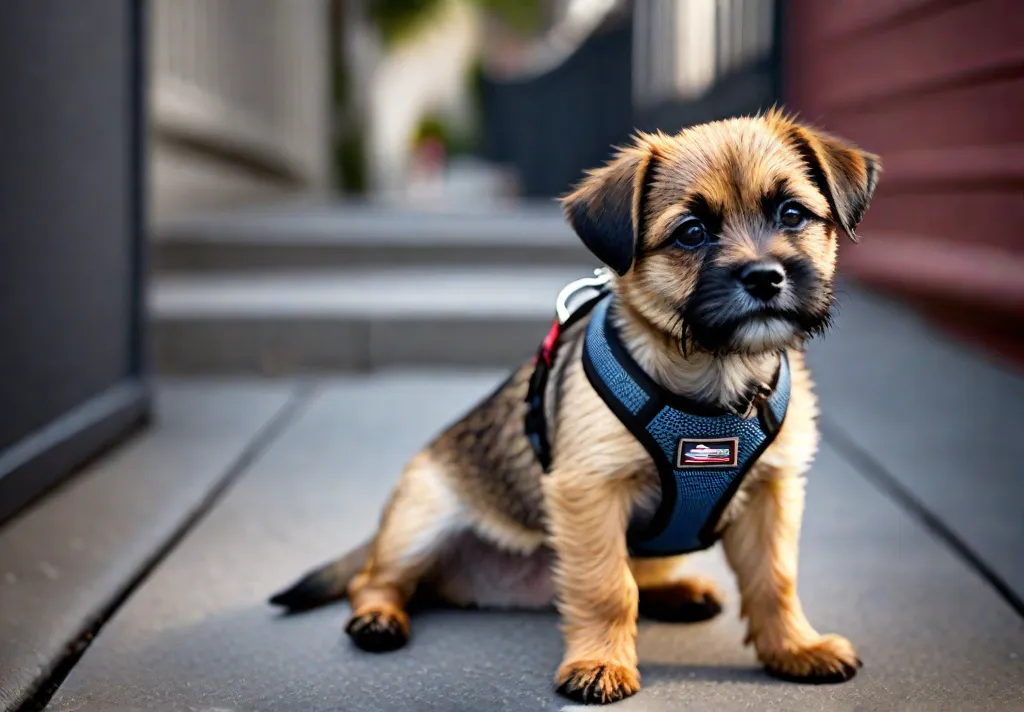
Brain Games for Indoor Fun
- Food puzzle toys
- Hide-and-seek with treats or toys
- New trick training
- “Find it” scent detection
Mental stimulation prevents boredom and destructive behaviors in this brilliant breed. Games and puzzles also strengthen the bond between the pup and the parent!
Conclusion: Embark on Your Rewarding Journey!
Raising a Border Terrier puppy requires dedication – but the payoff of an attentive adventure buddy is immense! Use these ten training techniques to set your energetic puppy up for success. With consistency, patience, and positivity, you’ll nurture a clever, affectionate companion for life.
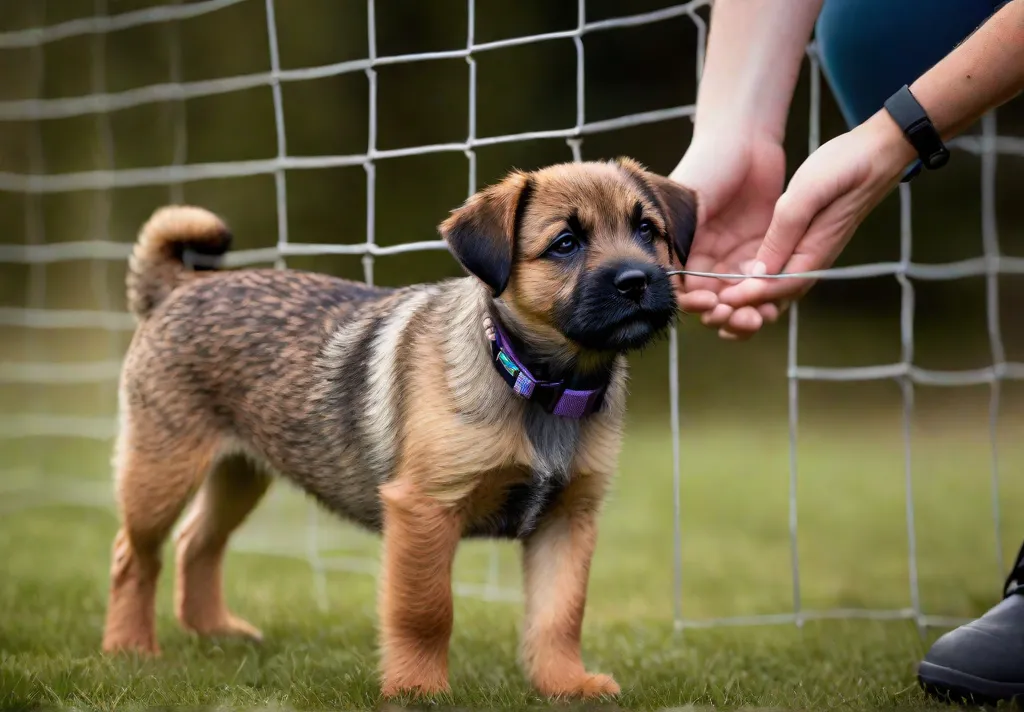
As the proud parent of a Border Terrier, embrace the hilarious misadventures and the cozy cuddles. Soon, those puppy razor teeth will give way to a doggie grin, signaling the start of a beautiful friendship on the trails, in the fields, and wherever your adventures may lead!
Frequently Asked Questions
Q: At what age can I start training my Border Terrier puppy?
A: You can start basic training as early as eight weeks old. This prime period between 8-16 weeks is vital for shaping behavior, so focus on positive experiences, socialization, and foundation cues like sit and come.
Q: How much exercise does a Border Terrier puppy need?
A: Border Terrier puppies need at least 30-60 minutes of activity daily as a high-energy breed. This can include playtime, training, walks, and interactive games. Ensure your pup gets both mental and physical stimulation.
Q: Why does my Border Terrier puppy nip and bite so much?
A: Mouthing and nipping are normal puppy behaviors as they learn bite inhibition. Redirect to chew toys, use positive reinforcement for gentle play, and enroll in puppy socialization classes so they can learn limits. With consistency, nipping will resolve by six months.
Q: Is crate training recommended for Border Terriers?
A: Absolutely! Border Terriers take well to crate training since they naturally seek out dens for comfort and security. Using treats and praise, you can make the crate a beloved sanctuary for your puppy to unwind. This also aids house training efforts.
Q: How can I curb separation anxiety in my Border Terrier puppy?
A: Start young by getting your puppy accustomed to alone time in short increments from 8-10 weeks old. Provide puzzle toys for mental stimulation, avoid overly emotional reunions, and reward calm behavior. With preventative training, you can prevent separation distress as your pup matures.